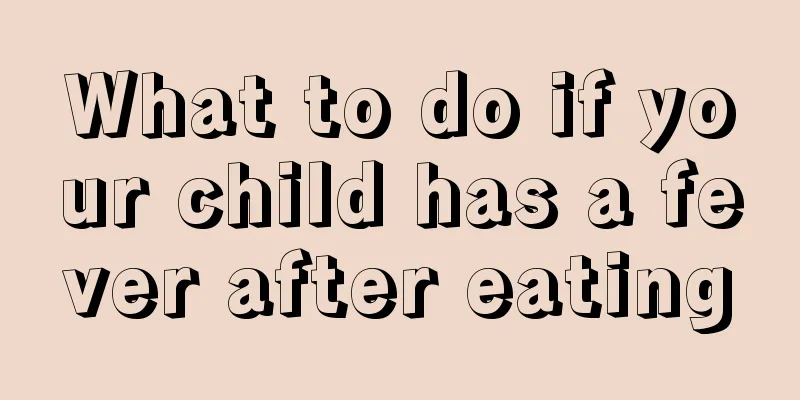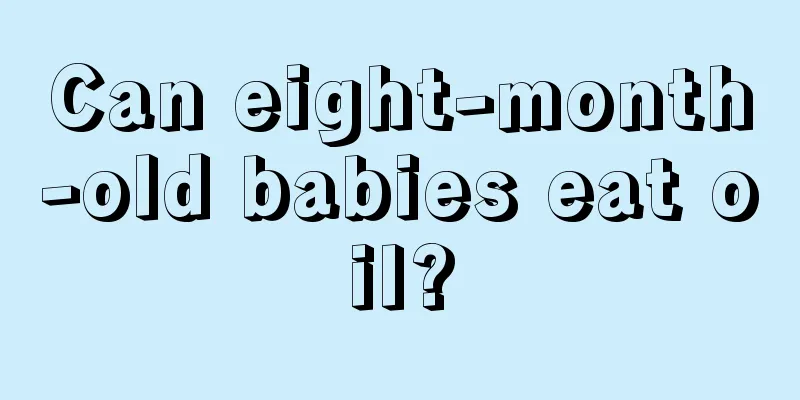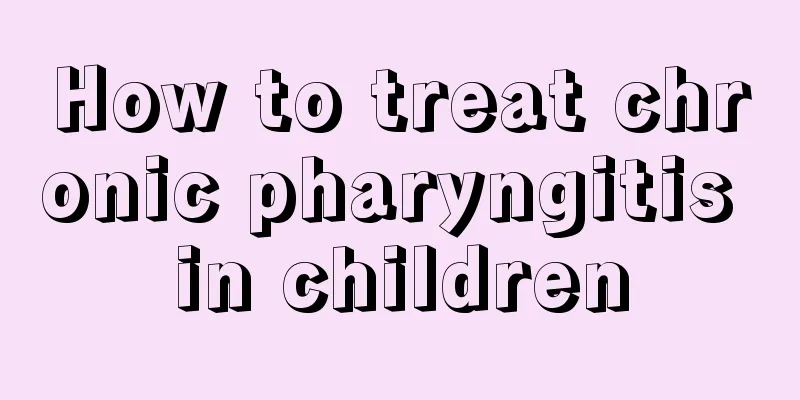My baby has a lot of phlegm and coughs. What are the methods to expel the phlegm?

|
Infants and young children usually have poor immunity. After all, they are in the process of physical development. If they have improper diet, and many children are picky eaters, such unbalanced nutrition will lead to poor resistance. If they are not dressed properly, they will easily catch a cold. Once they catch a cold, they may have problems with the respiratory system, such as tracheitis, bronchitis, etc. In this case, the baby may not be able to cough up phlegm, and may also make snoring sounds. The baby's face may also turn red and look uncomfortable. Tracheal inflammation will cause phlegm, which will introduce bacteria and affect recovery. It can also easily block the respiratory tract and cause breathing difficulties. In this case, you need to pay attention. If your baby has a lot of phlegm, what are the methods to cough and expel phlegm? 1. Patting the back: It can be used as an emergency measure when children cannot cough up phlegm, to help expel phlegm. The specific operation is: in the intervals between the child's coughing, let the child lie on his side or hold the child up to lie on his side. The parent slightly bends the five fingers of one hand, makes a fist, and gently pats the child's back. Pat your left side and lie on your left side, alternating between the two sides. The force of the slapping should not be too great, and it should be done from top to bottom and from outside to inside, in sequence. Pat each side for at least 3-5 minutes, 2-3 times a day. The back-patting method can not only loosen the phlegm in the child's lungs and bronchi, drain it into the trachea and discharge it, but also promote blood circulation in the heart and lungs, which is beneficial to the absorption of bronchial inflammation and enables early recovery from the disease. 2. Drinking water method: Let the child drink more water, especially cold boiled water at about 23 degrees, which has a good moisturizing and physical therapeutic effect on the throat and is beneficial to the elimination of local inflammation. Children with coughing attacks often have varying degrees of dehydration, which can aggravate respiratory inflammation and the thickness of secretions, making them difficult to cough up. Drinking more cold boiled water can dilute the sticky secretions, making them easier to cough out, which is beneficial for relieving cough and removing phlegm. At the same time, cold boiled water can improve blood circulation, so that the waste or toxins produced by the body's metabolism can be quickly excreted from the urine, thereby reducing its irritation to the respiratory tract. 3. Steam method: Pour boiling water into a large pot or teacup, hold the child, and let his mouth and nose face the rising steam and inhale and exhale. This can thin the phlegm and facilitate coughing up, and can also reduce congestion and edema of the trachea and bronchial mucosa and reduce coughing. But be careful to avoid burns and accidents. 4. Medication method: Do not take cough suppressants casually, so as not to suppress the cough center and hinder sputum discharge. For those with little sticky sputum that is difficult to cough up, expectorants such as ammonium chloride, platycodon, and polygala can be used under the guidance of a doctor; for those with a lot of mucous sputum that is difficult to cough up, use Bi Ke Ping, Tan Yi Jing, α-chymotrypsin, etc.; for those with white and sticky sputum, it is advisable to use Pinellia dew, almond cough syrup, and use ultrasonic nebulization inhalation if conditions permit. The Chinese medicine Chuanbei stewed with snow pear is also beneficial for resolving phlegm and relieving cough. Take a pear, cut off the head as a lid, dig out the core, add 10 grams of rock sugar and 6 grams of Chuanbei powder, cover the pear head, put it in a bowl, steam it over fire, and eat the pear and drink the juice. |
<<: Can children take ceftriaxone?
>>: What to do if a child's front teeth are broken
Recommend
What is the reason for the little red spots on the child's mouth
The small red spots on children's mouth are m...
Causes of high thyroid hormone levels in newborns
The birth of every newborn brings a great surpris...
Newborns fart loudly all the time
It is very common for newborns to fart. Some newb...
What to do if your baby sweats on his back
Many parents find that their babies sweat on thei...
What causes a child’s ears to suddenly swell?
If a child's ears suddenly swell, the child w...
What are some quick ways to stop cough in children?
If children cough, it is actually very bad for th...
What should I do if my child always bites his lower lip?
The health of their children is the greatest wish...
What should I do if my 1-year-old baby has a cold and fever?
Because babies are young, they will feel uncomfor...
Little red spot on the child's chin
The baby is too young and his body is not fully d...
Why do teenagers have left chest pain?
Chest pain is not a good phenomenon, because many...
What should babies eat for diarrhea? Diet therapy is the most important
The baby's physique is very weak, so if you d...
What is the reason for the white tongue coating of a 3-month-old baby?
A 3-month-old baby has gradually begun to adapt t...
How to reduce fever in children at night
It is not uncommon for children to have a fever a...
What to do if your baby has dry skin
Dry skin is common in many people, especially in ...
The child is very active. What's wrong?
When children are young, they often have problems...









